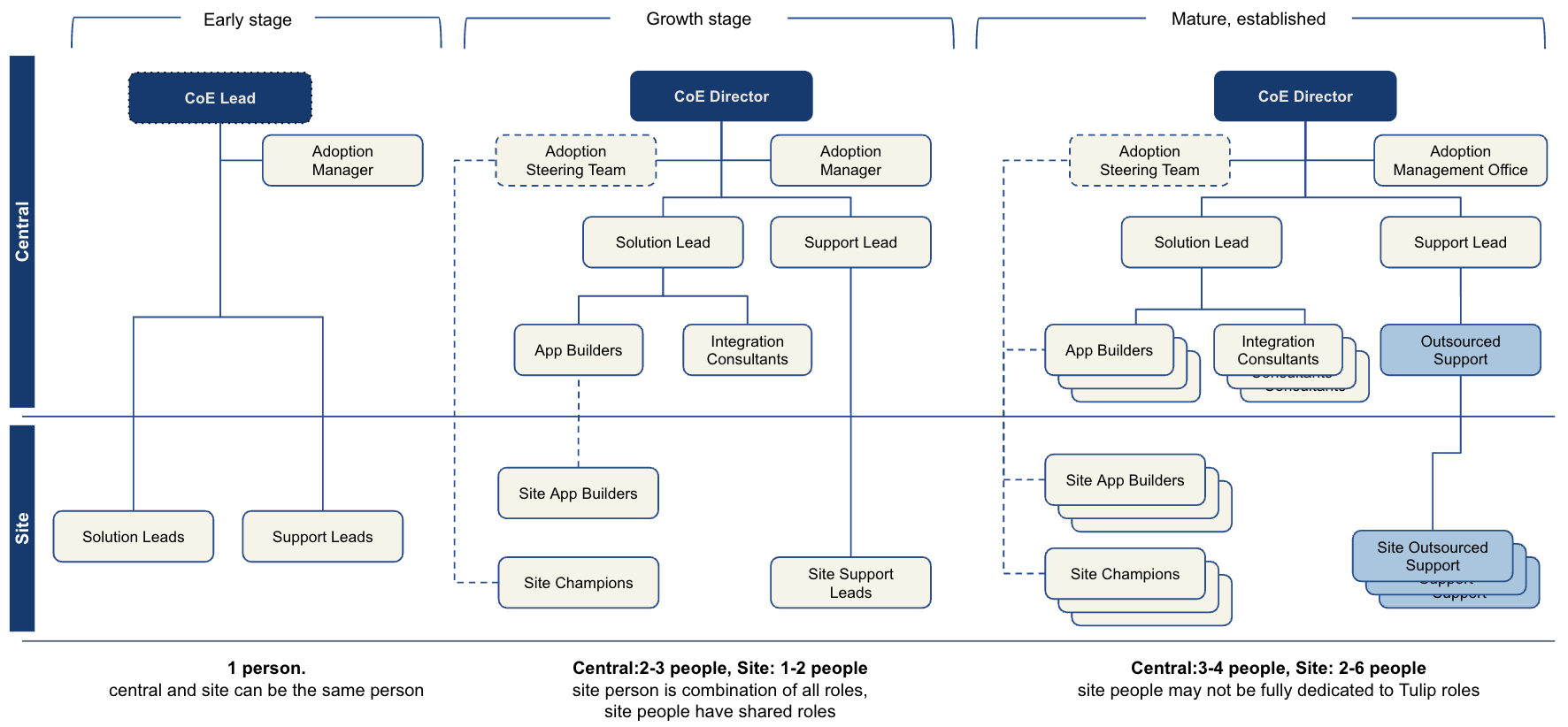This article is one dimension of our Digital Transformation assessment.
Overview
Your organization needs a well-defined strategy for managing the Tulip platform within your digital tool belt. This strategy should be part of a comprehensive plan that prioritizes business needs and identifies the digital technologies and tools required to address those needs. Good governance ensures personnel are adopting and using Tulip in a way that meets your goals and follows any regulatory requirements.
To achieve this, you'll need to establish clear policies and procedures that guide the use, maintenance, and development of the platform. This includes defining roles and responsibilities, setting up user access and permissions, and ensuring data integrity. Unauthorized or untrained users may make changes that go live immediately without understanding the potential consequences. This can lead to data corruption or errors, such as deletion of table records, running the wrong version of an app, or testing an app incorrectly and logging false data. Governance policies should also encompass change management processes to facilitate smooth transitions as new digital tools and technologies are introduced.
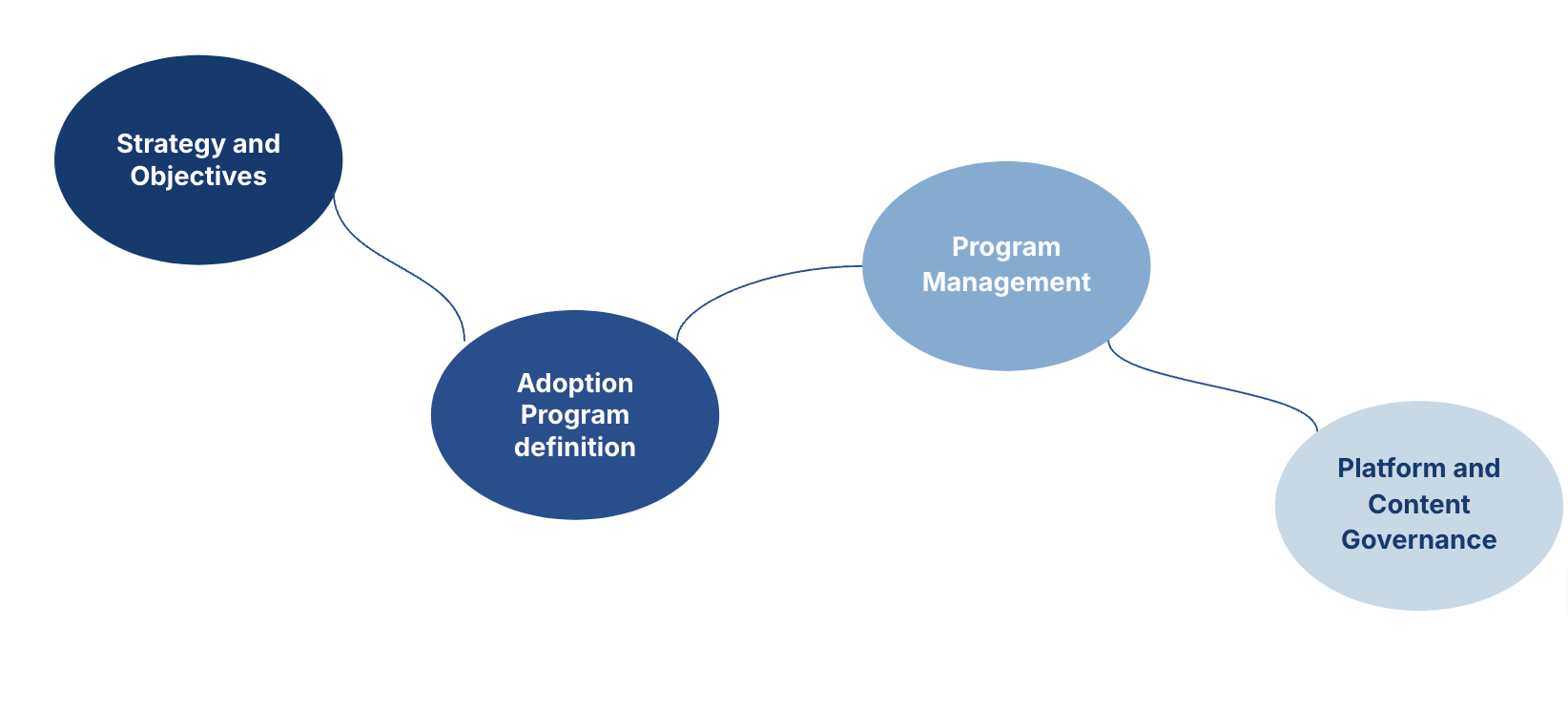
Your plan should include:
- Strategy and Objectives: Strategic goals and objectives that align with your organization’s business needs and roadmap for how Tulip will contribute to achieving these objectives.
- Adoption Program: A structured program that promotes the adoption of Tulip across your organization, including training and support.
- Program Management: Methodologies for executing on programs (e.g. processes for prioritizing use cases and planning roadmaps, executing projects, and tracking progress and value gain.)
- Platform and Content Governance: Governance policies that dictate how the platform is managed by Account Owners and Admins, and clear guidelines for content creation, management, and change management.
Strategy and Objectives
Digital Transformation plans should include strategic goals and objectives that align with your organization’s business needs. You should consider the following as part of your strategy:
- Vision for Change: Clear vision for how digital transformation will benefit the organization and what success looks like.
- Execution Strategy: Strategies for system integration and process harmonization.
- Resourcing Model: Model that identifies the necessary resources, including personnel, technology, and budget.
- Organization Structure Alignment: Org structure that is flexible and supports the strategic goals and facilitates change. This includes having designated roles and responsibilities for managing the platform, building apps, fostering a culture of continuous improvement, and ensuring communication and collaboration across departments.
- Culture and Mindsets: Culture that embraces digital transformation and is open to new technologies. Tulip is not something that can be set up once and ignored, productivity gains are achieved through a culture of continuous improvement.
- Tulip Roadmap: Use case roadmap and a plan for strategically expanding apps and solutions to increase productivity.
- Business metrics and KPIs: Metrics that guide, manage and govern digital transformation.
Checklist
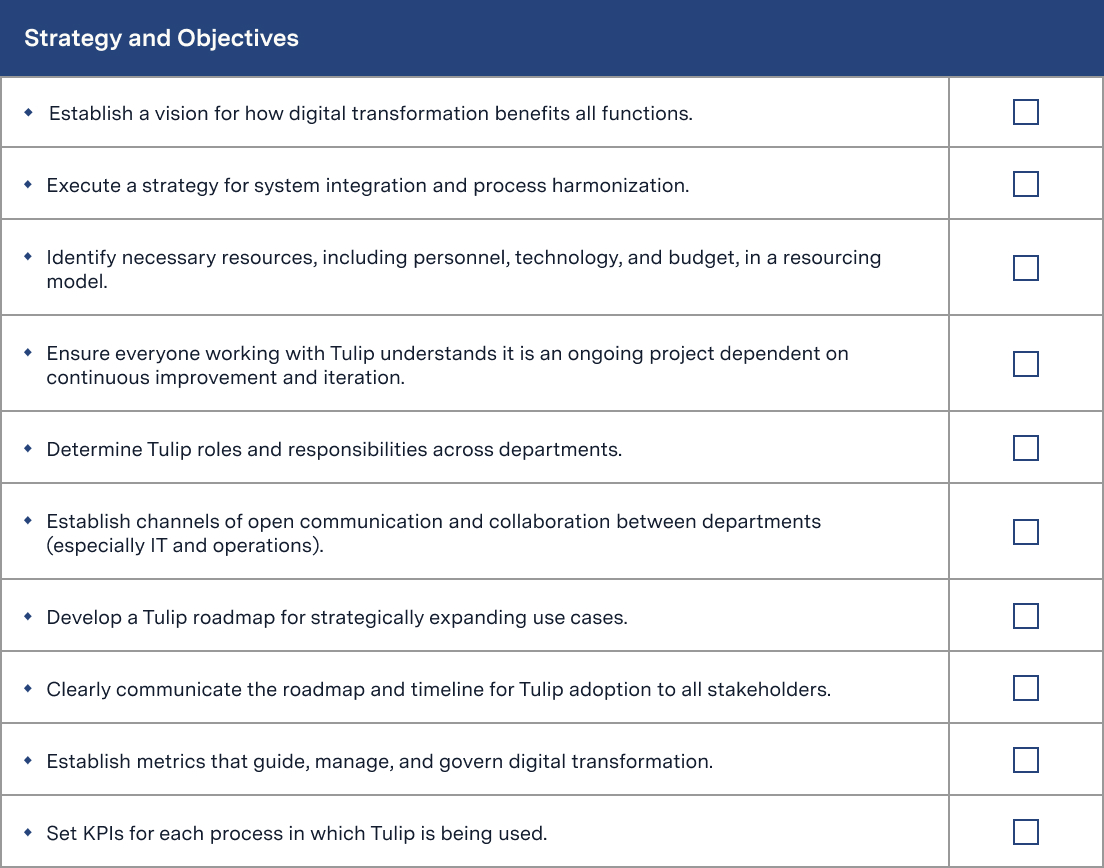
Download Digital Transformation checklists here.
Adoption Program
Adoption Programs define and document processes and procedures to integrate the Tulip platform into daily business operations. Key steps for building an adoption program include:
- Set Degree of Centralization: Determine the level of centralization for decision-making and platform management. For Enterprise organizations, Tulip recommends a Center of Excellence (CoE) team own the adoption program with a standardized reporting structure or method of communication between sites. Each site should have its own Tulip champion.
- Define Roles and Responsibilities: Clearly outline the roles and responsibilities of all stakeholders involved in the adoption process.
- Set Up an Internal Training Program: Create a training program to educate employees on using the Tulip platform effectively. You should leverage Tulip’s self-serve education content and certificates in Tulip University.
- Create IT and Operations Communication Channels: Successful Tulip apps are developed by engineers closest to the operations. IT should not own app development and there must be clear communication channels between IT and Operations to facilitate collaboration and support.
- Standardize Processes to Manage the Platform: Develop processes to manage the platform, including maintenance, updates, and user/operator support.
Example of how an Adoption Program can grow over time
Checklist
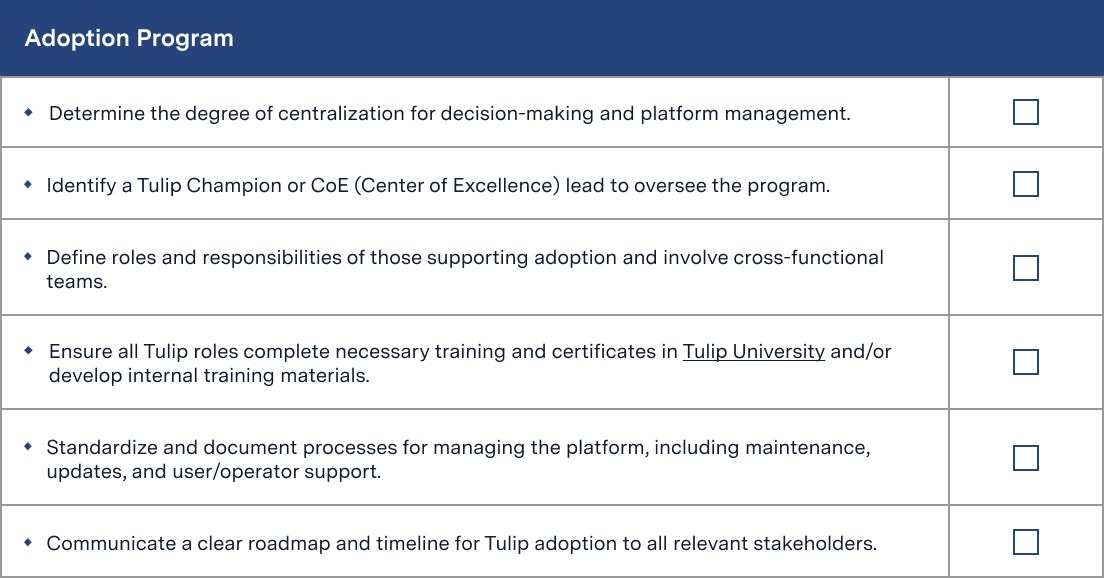
Download Digital Transformation checklists here.
Platform and Content Governance
As you expand with Tulip and grow your use cases or operations across multiple sites, it will be necessary to define roles and responsibilities and standardize processes for managing and maintaining your platform. Without standardized procedures and controlled access, managing an increasing number of users, apps, and data sources can become overwhelming. Consider the following:
- Platform Strategy: Create a control program that guides platform usage and development.
- Account Setup: Set initial controls and appearance of your Tulip Instance (e.g. timezone, color palette, network access).
- User Management: Develop policies for managing user access and user permissions to ensure quality and security.
- Content Management: Establish guidelines for managing content, including use cases, apps, and data. This includes both content and data organization as well as strategies that enable change management, such as app review and approval workflows, app versioning and changelogs, standardization of app templates, custom widgets, and connectors, etc.
- Shop Floor Management: Set up and manage the connection and activity of stations, machines, and devices used in operations.
- Workspace Management (Enterprise and above): Customize workspace settings and ensure sites are using standardized templates and following best practices.
Learn more about platform management and see a complete checklist of account controls here.
Checklist
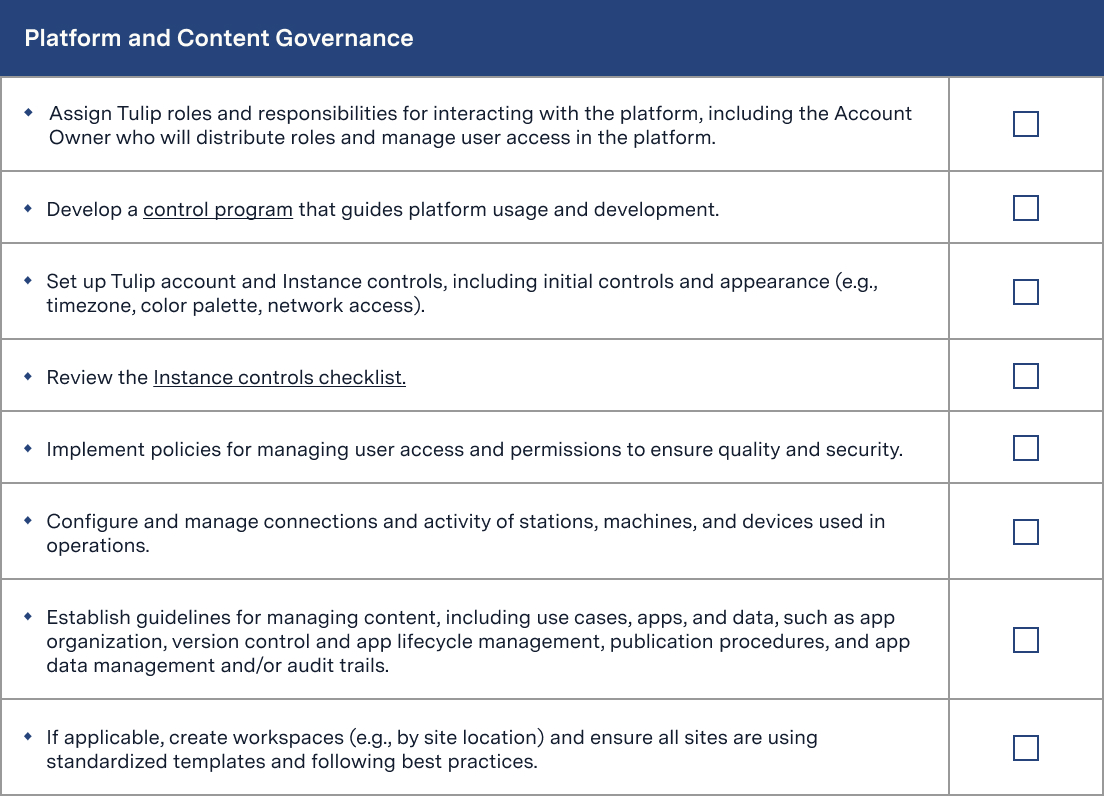
Download Digital Transformation checklists here.
